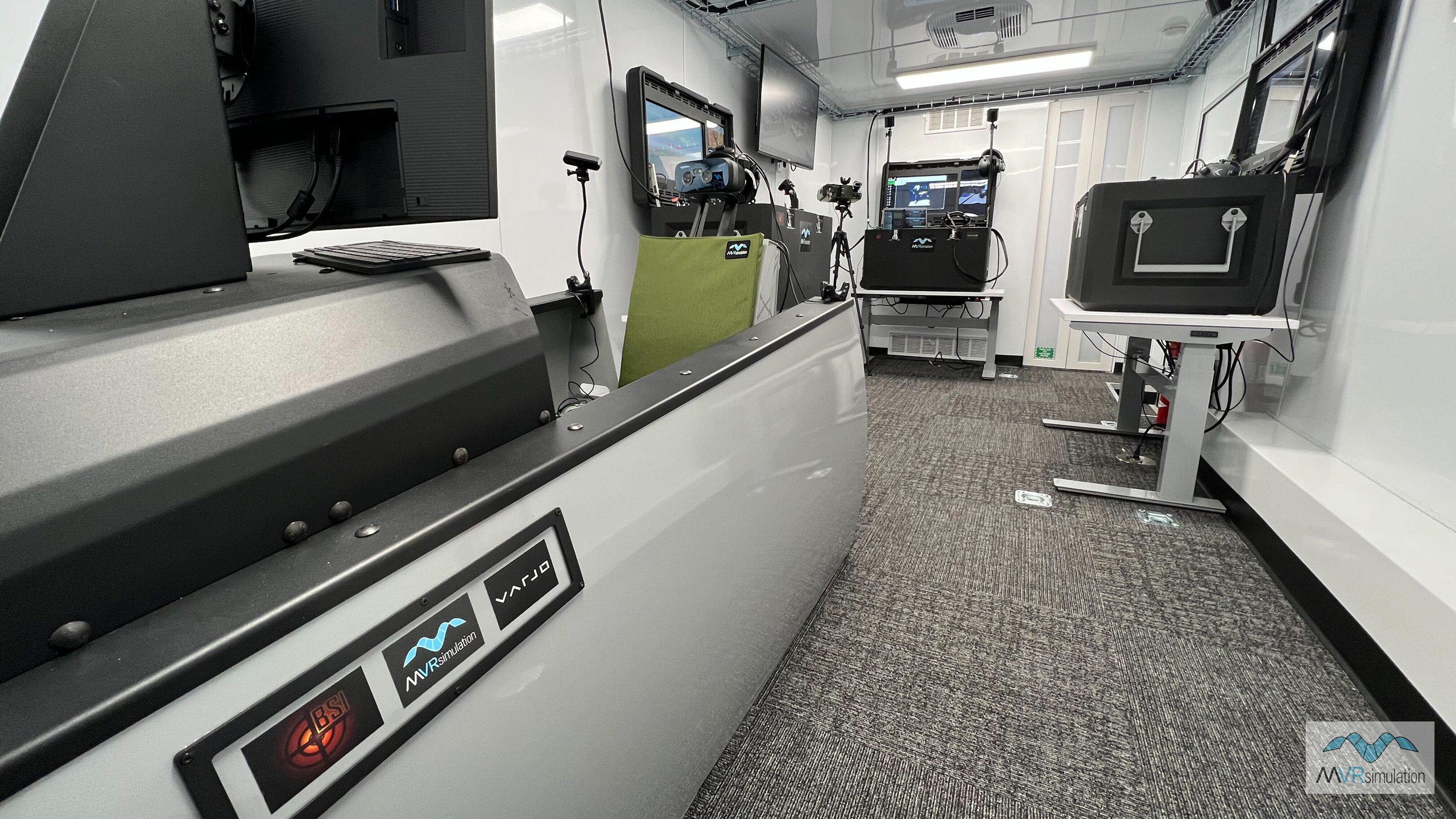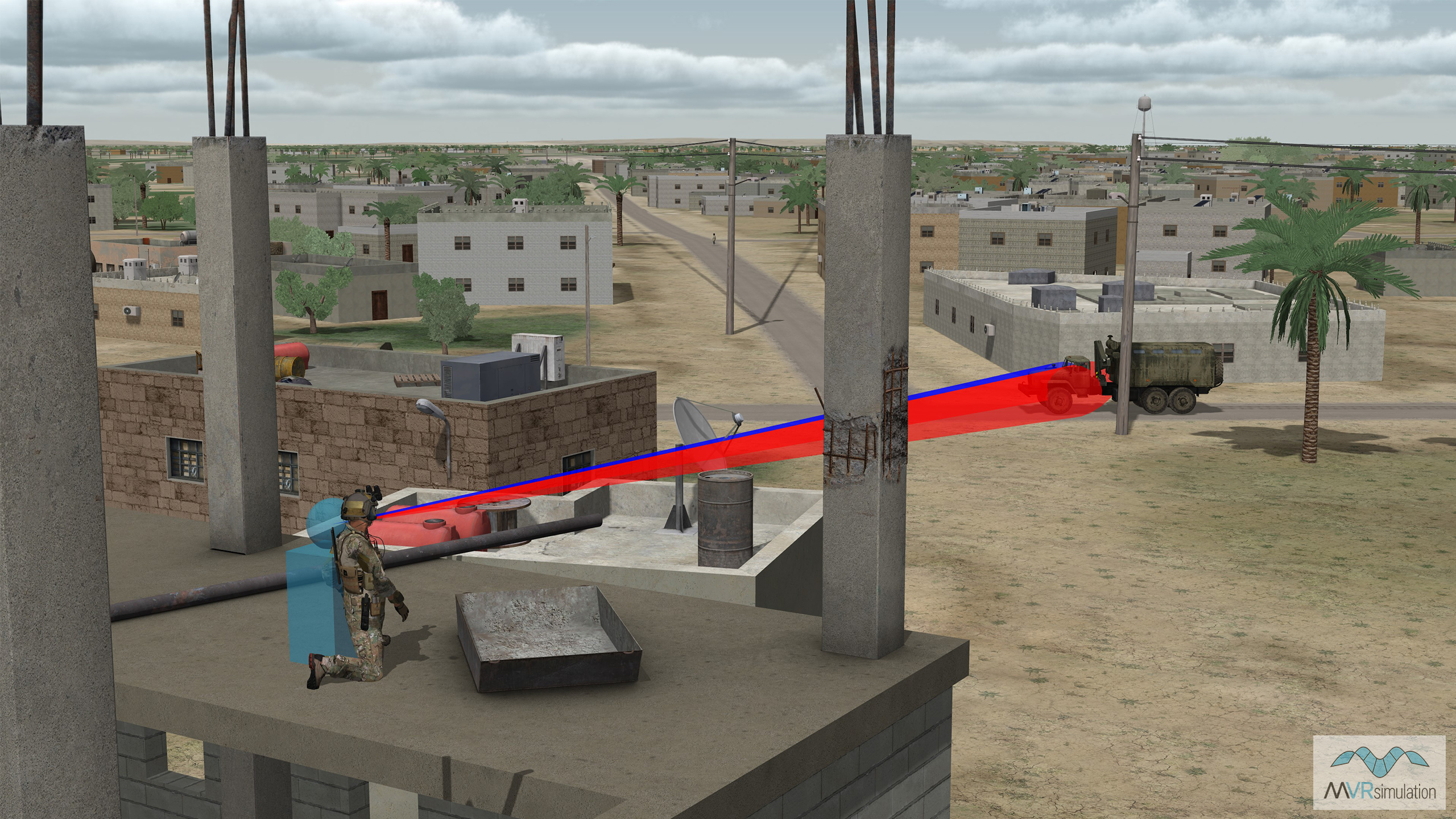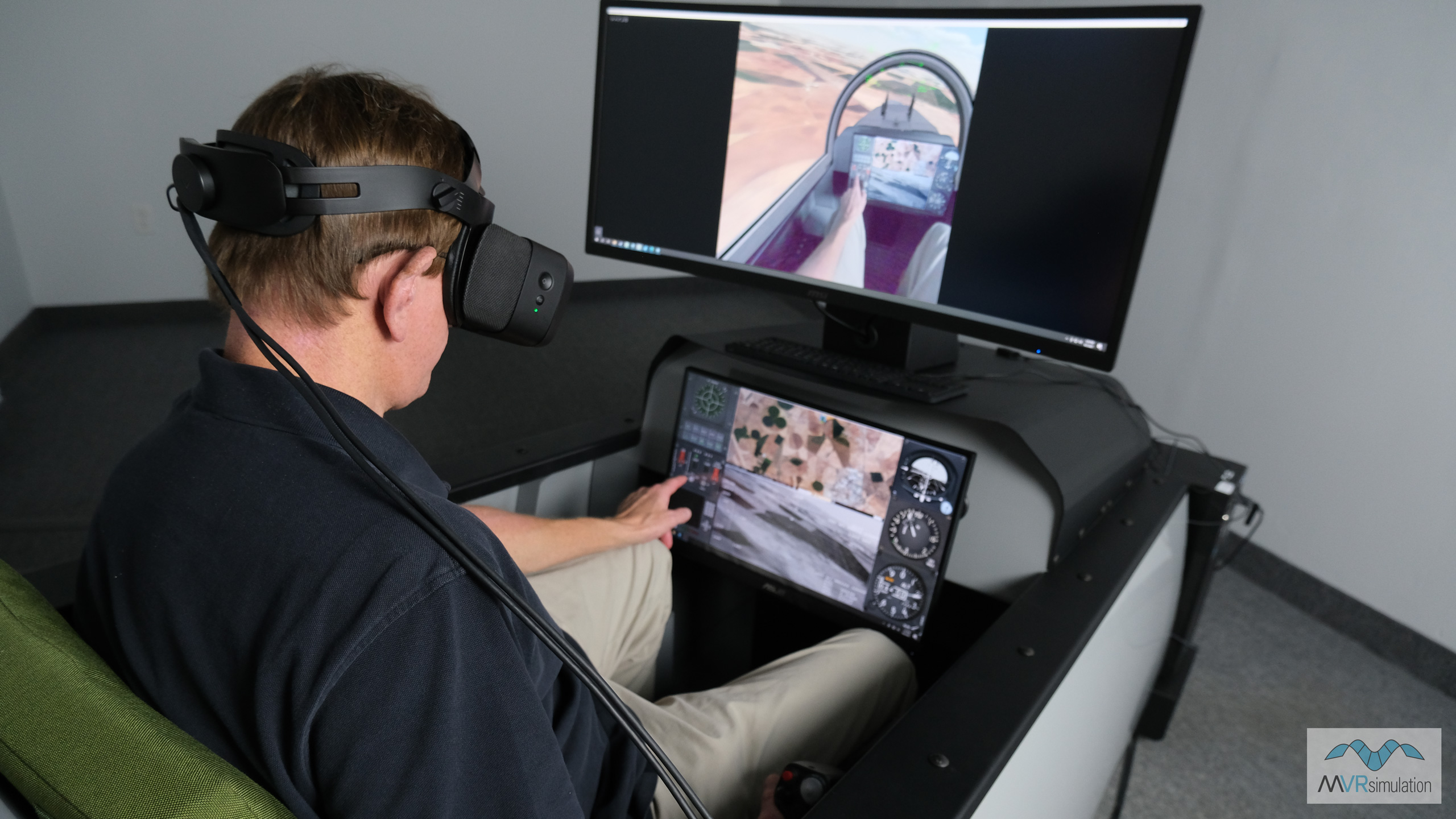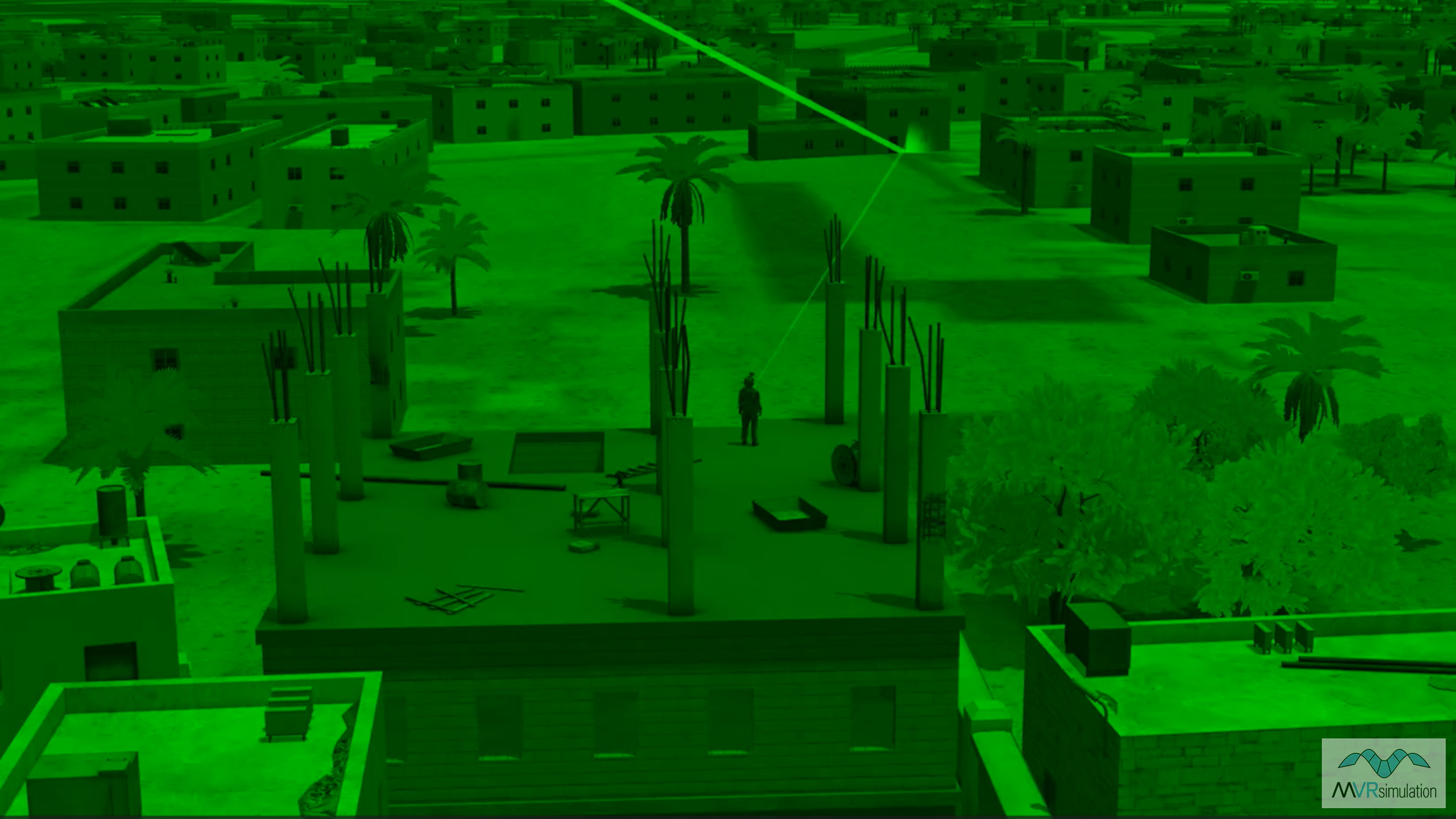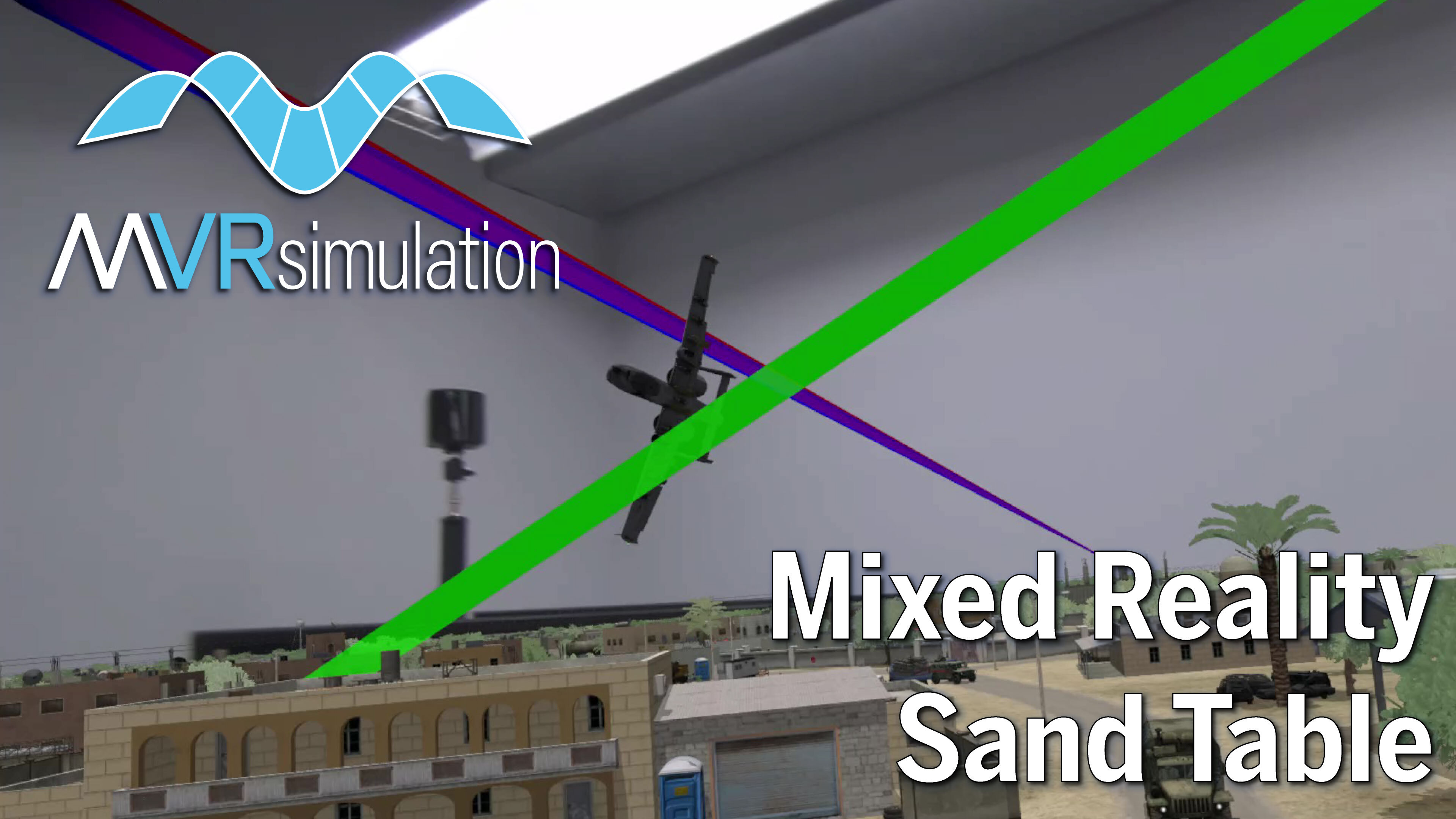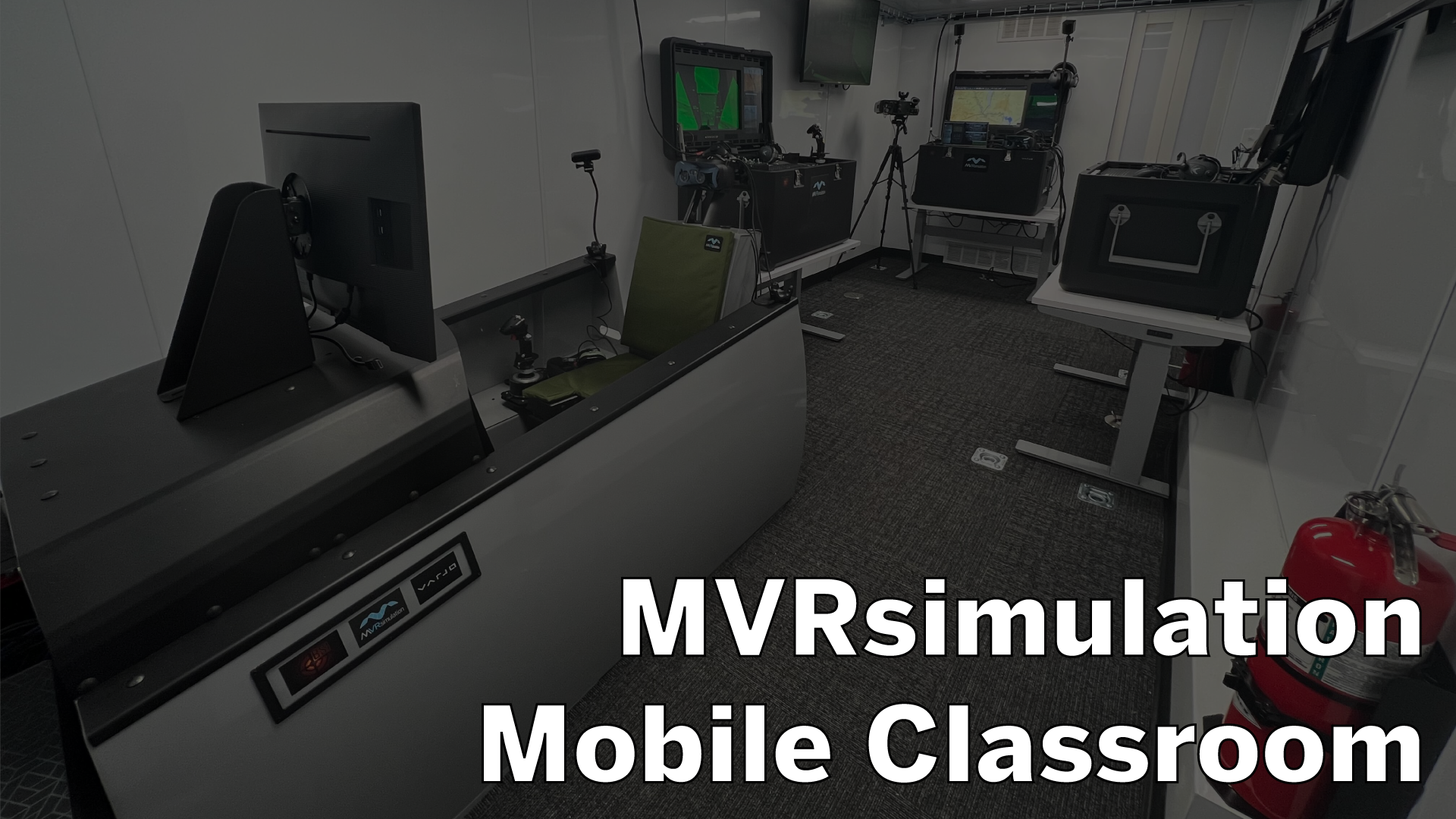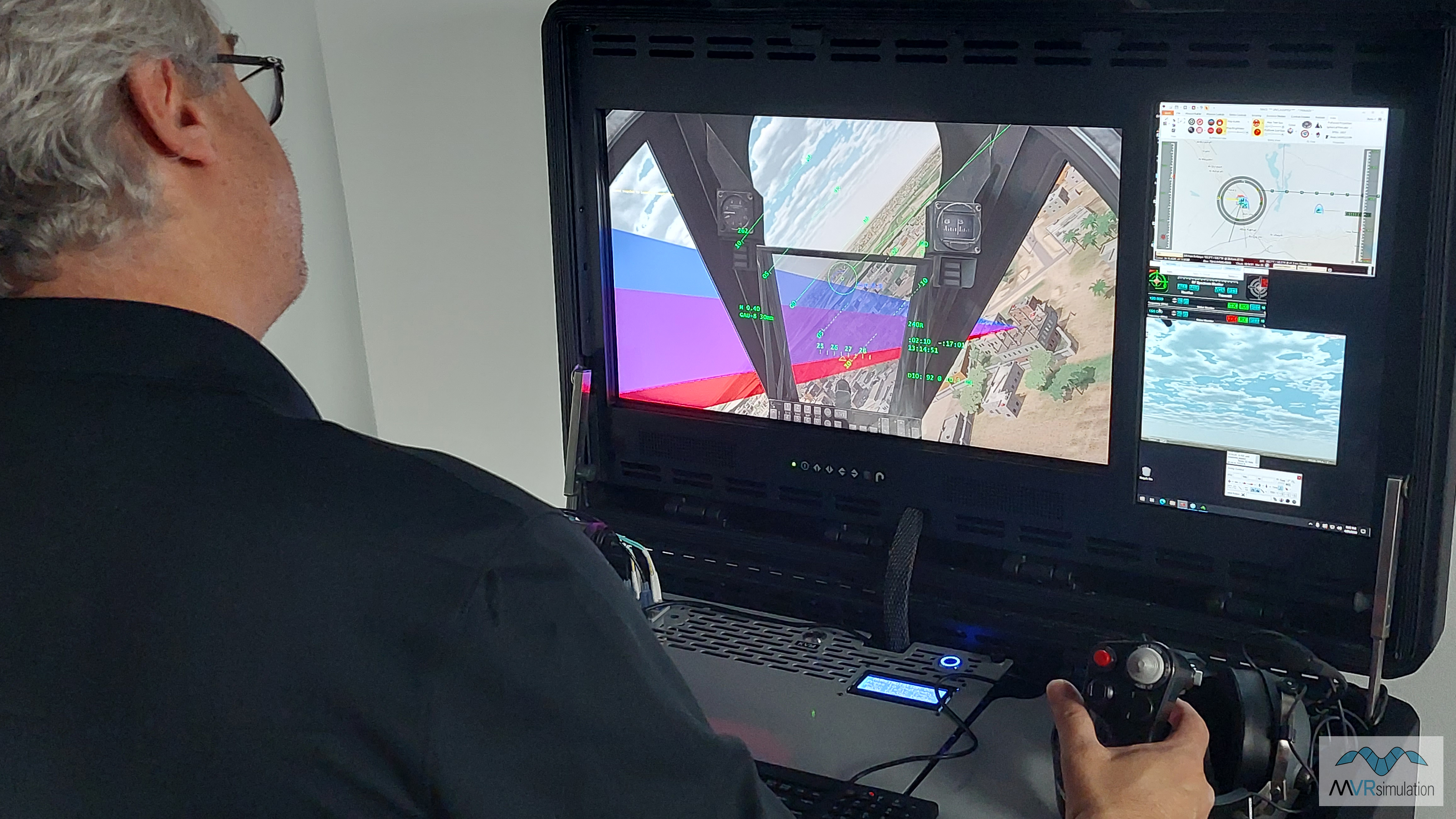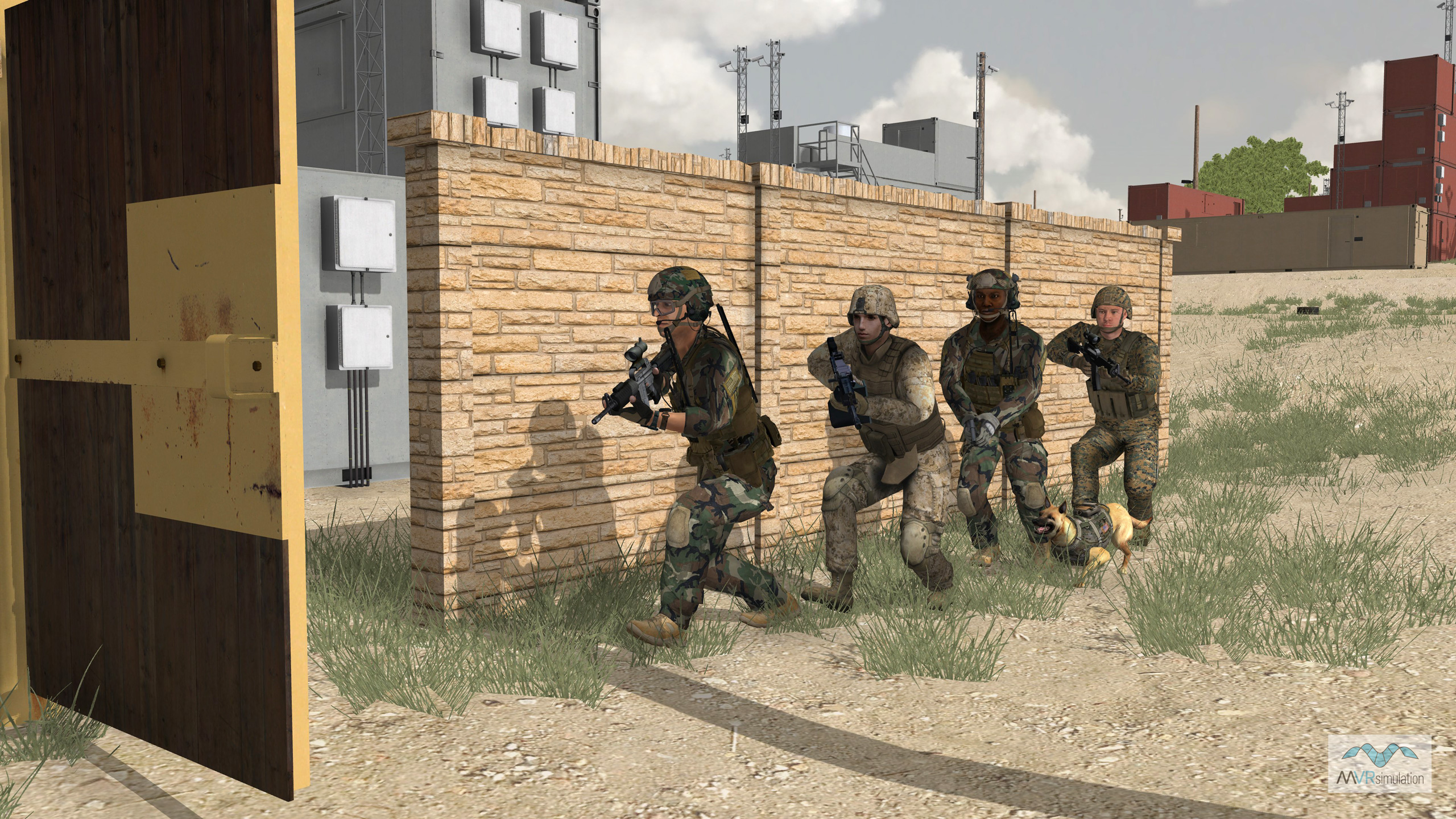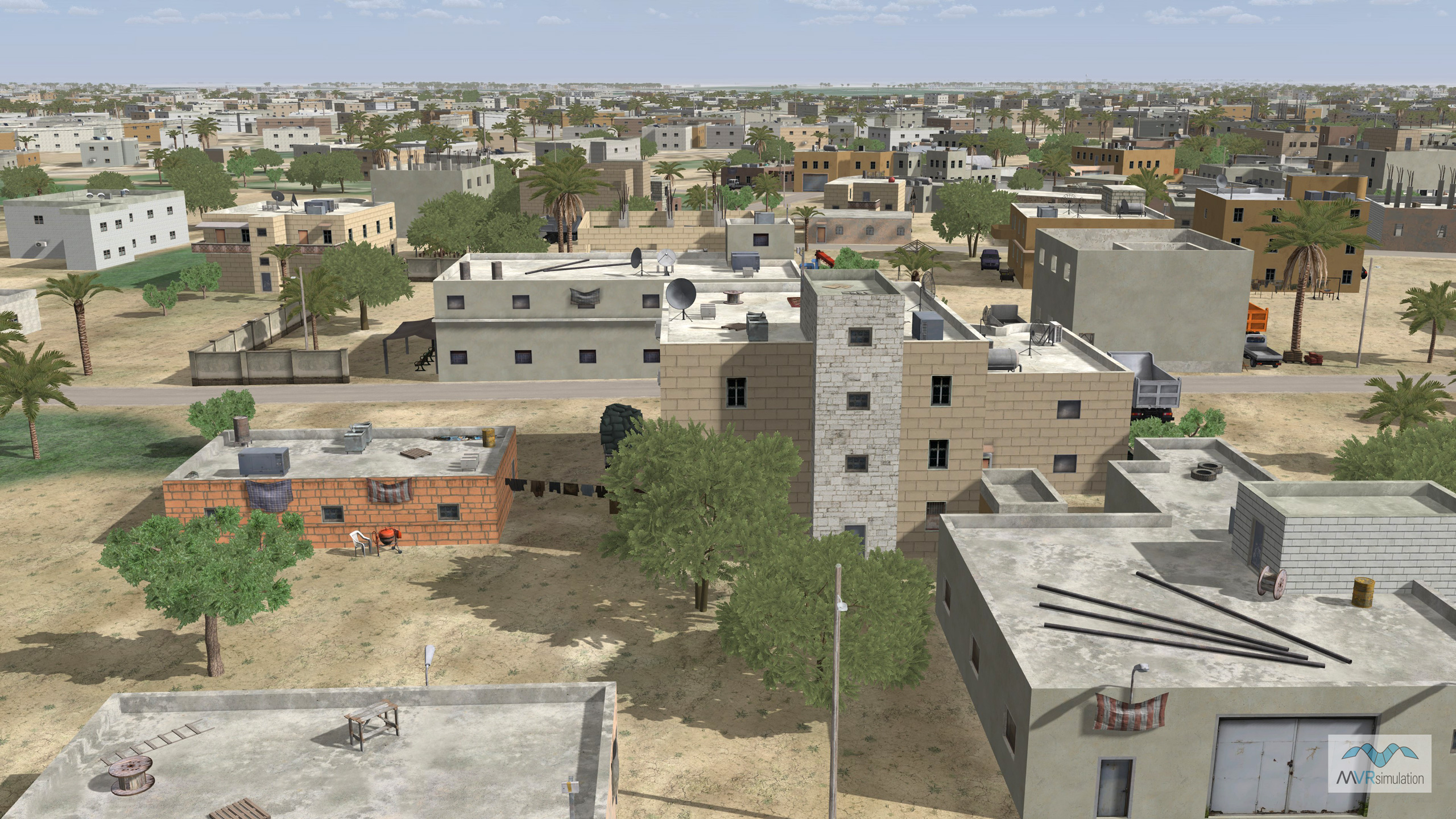I/ITSEC 2023
MVRsimulation at I/ITSEC 2023 - Booth #1019
At I/ITSEC 2023 in booth #1019 MVRsimulation demonstrated its new Mixed Reality Sand Table along with two fixed-wing Part Task Mission Trainers (PTMTs) networked with one full Deployable Joint Fires Trainer (DJFT) simulator (now Fully Accredited - see below) in mixed reality high-speed flight, JTAC, Close Air Support (CAS), and RPAS operator training scenarios – all supported by geospecific terrain rendered in Virtual Reality Scene Generator (VRSG).
The DJFT had a flexible configuration incorporating an Instructor, JTAC Observer, and Role Player MQ-9 Reaper operator providing mission overwatch with a KLV metadata based sensor feed. The two PTMTs were networked in as CAS Role Players configured as an A-10 and F-18.
Full spectrum training scenarios were running, including exercises such as Digitally Aided CAS (DACAS) in accordance with current joint tactics, techniques and procedures, Match Sparkle target identification between JTAC and CAS aircraft, and full NVG-supported day/night transitions. All missions displayed full integration of partner technologies, including the new Varjo XR-3 Focal Edition mixed reality headset, Battlespace Simulation's MACE, Sierra Nevada Corporation's SNC TRAX, and all physical/emulated hardware and software.
Mixed-Reality Sand Table
During I/ITSEC 2023, MVRsimulation unveiled the new Mixed-Reality Sand Table. The system was used as an extension to the DJFT and PTMT network, providing a 3D visualization tool for realistic mission planning/rehearsal, classroom-deployed tactics training, real-world mission planning, and After Action Review.
The system is a new stand-alone system that can work in conjunction with other simulators with network connectivity and LVC compatibility. This includes the DJFT, PTMT, or any other DIS-based networked simulator. Developed using the same technology as used for the Observer Station for the DJFT, the Sand Table enables one or more users to view a scenario within a 3D virtual "table" blended into the real world. Observers use VR controllers to adjust their position and orientation within the virtual environment. Mission planning is conducted via MACE (or other SAF software). Wearers can see both MACE running on a tablet or similar device as well as the 3D representation of the live mission in real time.
DJFT Surpassess Accreditation
The DJFT is fully accredited by the Joint Fire Support Executive Steering Committee (JFS ESC) for Type, 1, 2, and 3 Terminal Attack Control (TAC), Bomb on Coordinate (BOC), Fixed-Wing (FW), Rotary-Wing (RW), Remote Observer (RO), Video Down-Link (VDL), Suppression of Enemy Air Defenses (SEAD), Urban, Forward Air Controller (Airborne) (FAC (A)), Night, IR, and Laser controls.
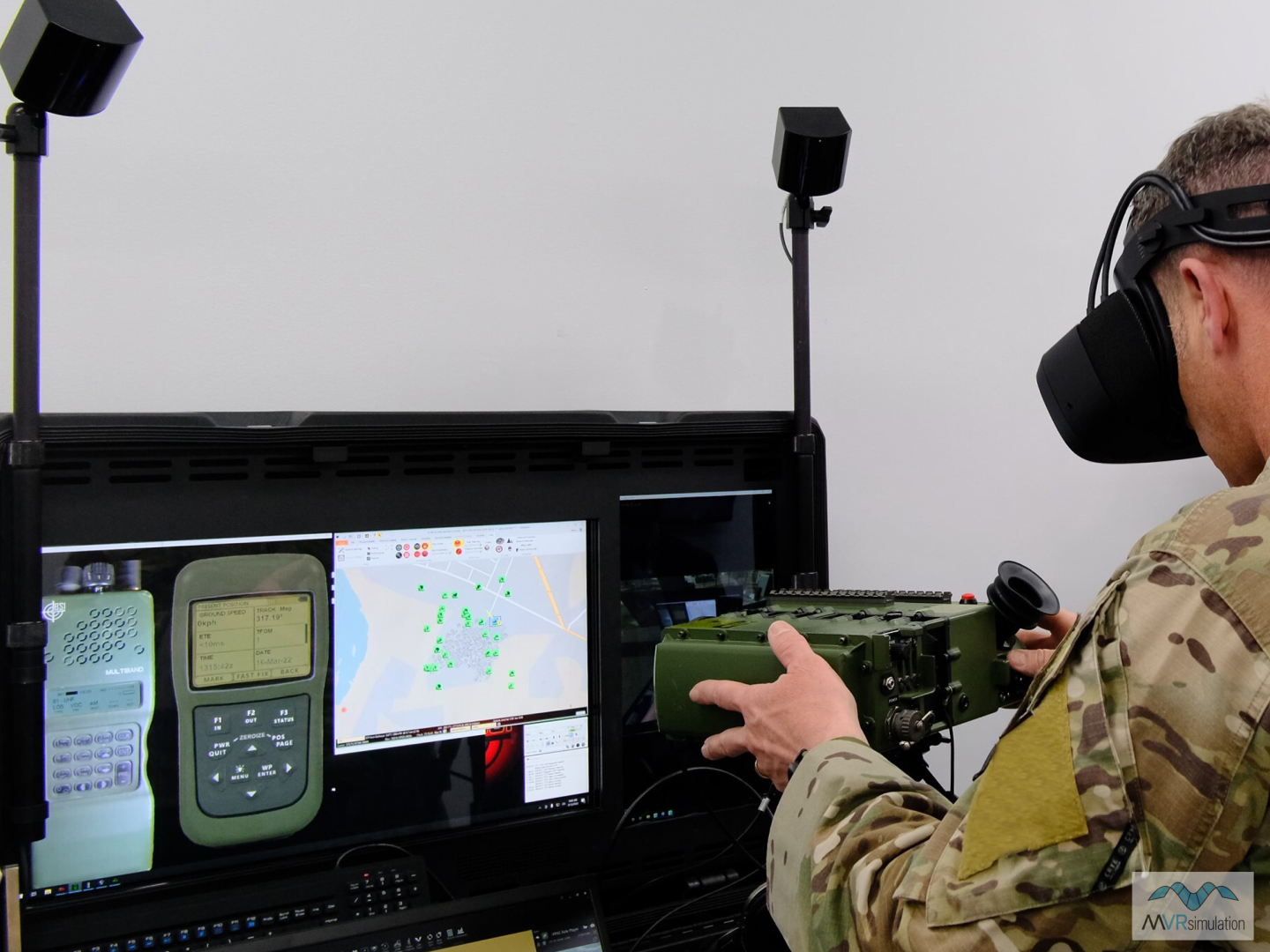
VRSG Terrain
Terrain Present at I/ITSEC 2023
All DJFT Stations and PTMT role players in each scenario trained using shared high-resolution virtual environments using MVRsimulation's round-earth VRSG terrain architecture.
Our Grand Canyon scenario displayed MVRsimulation's CONUS NAIP terrain consisting of 1-meter per-pixel (mpp) imagery from the National Agriculture Imagery Program. The scenario allowed the trainee within the PTMT to flyover Grand Canyon National Park with unmatched performance and crystal-clear visuals.
Visitors to booth #1019 were able to explore the rich detail of MVRsimulation's virtual MOUT site for the Yuma Proving Ground in Arizona. The virtual MOUT site was built from 30 cm per-pixel imagery and 2 meter per-pixel elevation. 3D culture such as storage containers (many with modeled interiors), fortifications, equipment, and other elements populated the SOTACC Village MOUT site.
Our Hajin terrain is built from geospecific high-resolution 50cm imagery from Maxar Technologies compiled with underlying SRTM elevation data at a 30-meter elevation post spacing. The source data is blended to underlying 1-2 meter source imagery of all of Syria. This means VRSG simulates the first-person virtual world for all trainees in the scenario from the same terrain – whether they are a JTAC on the ground looking at the horizon, an A-10 acquiring a ground target at 1,400ft, or an MQ-9 RPAS sensor operator performing overwatch at 50,000 ft – and enables all trainees to identify and lock-on to the same 3D target entity for Match Sparkle training exercises.
MVRsimulation's high-resolution, geotypical urban Ukraine MOUT site focused on creating 5 detailed unique city blocks of Kharkiv, Ukraine. The virtual MOUT site utilizes multiple street elements ranging from fences and streetlights down to vegetation and park furniture. Over 40 buildings in different configurations were created to assist with urban combat training. Multi-level interior elements of residential and office buildings, such as hallways, stairwells, attics, and more were created with great detail to enable trainees to reproduce natural firing positions during training exercises.
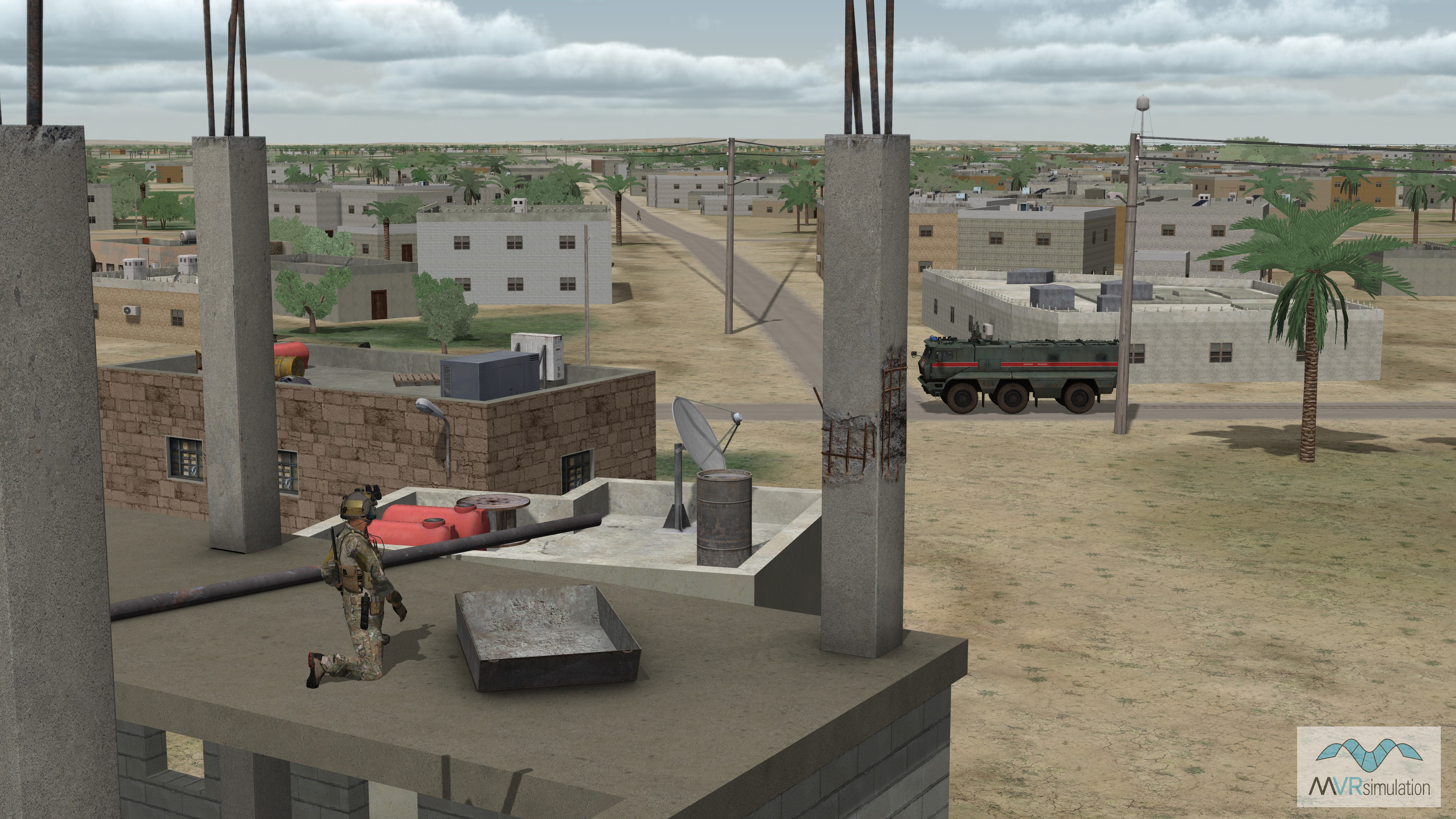

VSRG in partner booths
MVRsimulation and VRSG were also present at a number of our partner booths, including:
- ZedaSoft (#1573) VRSG provided visuals for four systems: the MiLToC Role Player station, a Mockingbird UAS/RPA simulator, an Apache Mixed Reality Simulator, and new ZedaVR tool.
- Battlespace Simulations (#1037): VRSG provided visuals and overlay for an ISR operator training system.
- TRU Simulation + Training (#2634): Visitors experienced the future of attack reconnaissance by flying the Bell Invictus 360 simulator, built by TRU in collaboration with Bell. Featuring VRSG visuals and 3D content.
- Radiance Technologies (on the BSI booth #1573): VRSG provided visuals for an FMV, EO/IR sensor payload.
Demos in Mobile Classroom
The PTMT and DJFT simulators were transported to I/ITSEC and are on display as part of MVRsimulation's new Mobile Classroom. This fully-equipped Mobile Classroom trailer contains both the DJFT and PTMT to provide a shared, collaborative virtual training space. The 8.5’ x 20’ enclosed v-nose trailer can support on-site training as a self-contained networked simulation environment.
In addition to the DJFT and PTMT products, the classroom contains a stealth view for real-time eye gaze tracking, a tech storage closet, and three tables to support the DJFT cases.

